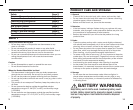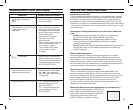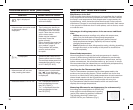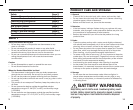
NOTES ON TEMPERATURE
Why Measure in the Ear?
Clinical studies have shown that the ear is an excellent site for taking
body temperature because the temperature taken in the ear reflects
the body’s core temperature. Body temperature is regulated by the
hypothalamus, which shares the same blood supply as the tympanic
membrane. Changes in core body temperature are usually seen sooner
in the tympanic membrane than in other places, such as rectum, mouth
or under the arm.
Advantages of taking temperature in the ear versus traditional
sites:
• Axillary temperature readings only reflect skin temperature,
which may not indicate the internal body temperature.
• Rectal temperature often lag significantly behind internal
body temperature changes, especially at times of rapidly
changing temperatures.
• Oral temperature is often influenced by eating, drinking, breathing
through the mouth, or the inability of the person to close his/her
mouth completely.
Normal body temperature
Normal temperature refers to the body temperature of a healthy
person. It differs among individuals and is affected by environmen-
tal conditions such as time of day, atmospheric temperature, activity
before measurement, site of measurement e.g. ear, mouth, or armpit.
We recommend that you determine your normal body temperature by
measuring several times under the same conditions.
How Does the Ear Thermometer Work?
The Ear Thermometer measures the infra heat generated by the
eardrum and surrounding tissues. Clinical research has shown that
the ear is an ideal site for taking body temperature since the eardrum
shares blood vessels with the hypothalamus; the part of the brain
that controls body temperature. To help ensure accuracy, the
Ear Thermometer takes 6 measurements within one second and
displays the average temperature.
Measuring difference for ear themometer (for reference only)
According to the explanation of ASTM-E1965,
there might be some differences in reading
results if the measuring position is different.
The following drawing is taken from
ASTM-E1965 for your reference (Fig.1).
3
TROUBLESHOOTING (continued)
10
Conditions Possible cause and solution
• Measurement cannot be made
or abnormal value is
displayed.
• Tip of probe may be dirty or
damaged. Clean the probe.
• Excessive earwax in the ear
canal. Clean the ear canals
with a cotton swab.
• Probe may be insterted
incorrectly. Insert the
probe correctly.
Follow inserting the probe into
the ear canal under “use of
your product” page 8.
If the problem still persists,
send to service center
for repair.
• is displayed • There may be a short circuit.
Please contact service center.
• The ambient temperature has
exceeded the specific range
of 41°F-104°F(5°C-40°C).
• Measurement will not start
after pressing the button.
• Measurement is made when
the “ “ is not displayed.
Measure again after the sign
is displayed.
• Measured result is “Hi” or “Lo” • ”Hi” is displayed when the
body temperature is more
than 107.6
°F(42°C).
• ”Lo” is displayed when the
body temperature is less
than 95
°F(35°C).
• sign is displayed • Low battery signal. Replace
with new battery.














